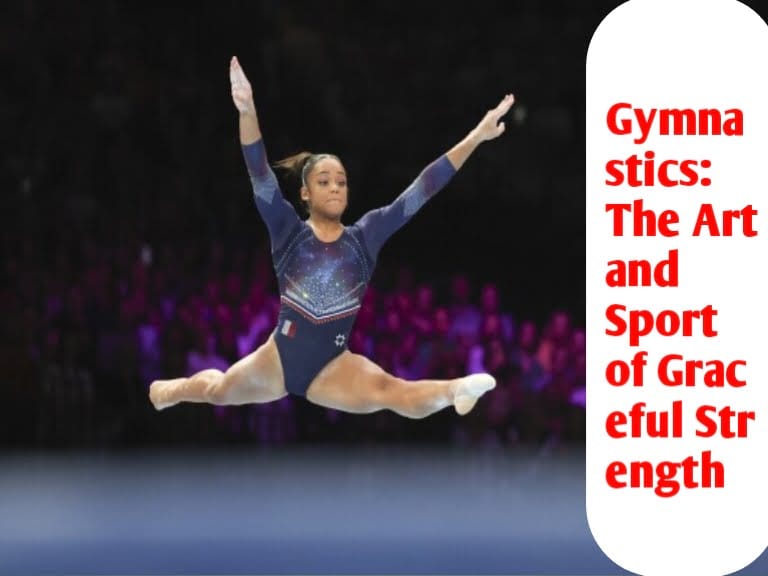Gymnastics: The Art and Sport of Graceful Strength
Gymnastics: The Art and Sport
Gymnastics is a dynamic and highly demanding sport that combines strength, flexibility, balance, and coordination with artistic expression. It encompasses various disciplines and routines, each requiring a unique set of skills and techniques. This article explores the history, disciplines, training, and significance of gymnastics as a sport, highlighting its impact on athletes and its presence in international competitions.
History of Gymnastics
The origins of gymnastics can be traced back to ancient Greece, where physical fitness was an essential part of daily life and education. Greek athletes performed various gymnastic exercises to prepare for competitions, such as the Olympic Games. The modern form of gymnastics began to take shape in the early 19th century, largely thanks to the efforts of Friedrich Ludwig Jahn, known as the “father of gymnastics.” Jahn introduced the first gymnastics equipment and established the Turnverein movement in Germany, promoting physical education. Gymnastics spread throughout Europe and eventually reached the United States, where it continued to evolve. The International Gymnastics Federation (FIG) was founded in 1881, and gymnastics was included in the first modern Olympic Games in 1896 for men and in 1928 for women.
Disciplines of Gymnastics
Reading more…. Sailing: The Art and Sport of Navigating the Seas
- Artistic Gymnastics: The most widely known discipline, artistic gymnastics involves performances on different apparatuses. For men, these include the floor exercise, pommel horse, still rings, vault, parallel bars, and horizontal bar. Women compete in the vault, uneven bars, balance beam, and floor exercise.
- Rhythmic Gymnastics: This discipline combines elements of ballet, dance, and gymnastics. Athletes perform routines with apparatuses such as the hoop, ball, clubs, ribbon, and rope, emphasizing grace, coordination, and flexibility.
- Trampoline Gymnastics: Athletes perform acrobatic routines on a trampoline, executing high-flying flips and twists. This discipline also includes synchronized trampoline, where two gymnasts perform identical routines on separate trampolines.
- Acrobatic Gymnastics: In this discipline, pairs or groups of gymnasts perform routines that include acrobatic lifts, throws, and catches. It emphasizes teamwork, strength, and coordination.
- Aerobic Gymnastics: This discipline involves high-energy routines performed to music, focusing on aerobic fitness, strength, and flexibility. Athletes compete in individual, mixed pair, trio, and group categories.
Training and Skills Required
- Strength and Conditioning: Gymnasts must develop significant muscle strength, particularly in the core, arms, and legs, through resistance training, bodyweight exercises, and conditioning drills.
- Flexibility: Flexibility is crucial for performing many gymnastic movements. Regular stretching and flexibility exercises are integral to a gymnast’s training regimen.
- Balance and Coordination: Balance exercises and drills improve stability and coordination, essential for executing precise movements on apparatuses like the balance beam and pommel horse.
- Technique and Form: Proper technique is vital for performing gymnastic skills safely and effectively. Gymnasts practice specific movements repeatedly to perfect their form.
- Mental Focus and Discipline: Gymnastics requires intense concentration and mental toughness. Athletes must remain focused during training and competition, managing pressure and staying composed under stress.
Competitive Gymnastics
- Scoring and Judging: Gymnastic routines are evaluated based on difficulty, execution, and artistic impression. Judges award scores for each performance, with deductions for errors such as falls, steps, or form breaks.
- Major Competitions: Gymnastics is featured in several prestigious competitions, including the Olympic Games, World Championships, and continental championships. These events showcase the highest level of gymnastic talent and skill.
- Levels and Age Groups: Gymnasts typically progress through various levels of competition based on their skill development and age. Competitive gymnastics includes programs for youth, junior, and senior athletes.
The Significance of Gymnastics
Gymnastics offers numerous benefits, both physical and mental. It promotes overall fitness, including strength, flexibility, and cardiovascular health. The sport also teaches discipline, perseverance, and goal-setting, helping athletes develop important life skills. Gymnastics fosters creativity and self-expression through the artistic elements of routines. Additionally, the camaraderie and teamwork involved in training and competition build strong social connections and a sense of community.
Conclusion
Gymnastics is a sport that embodies the perfect blend of athleticism and artistry. Its rich history, diverse disciplines, and demanding training make it a unique and rewarding pursuit for athletes of all ages. Whether performed at a recreational level or on the world stage, gymnastics continues to inspire awe and admiration, celebrating the incredible capabilities of the human body and spirit.
How did you like the information given in our article today, please tell us in the comment section and for more such posts, follow our page The News House, thank you
